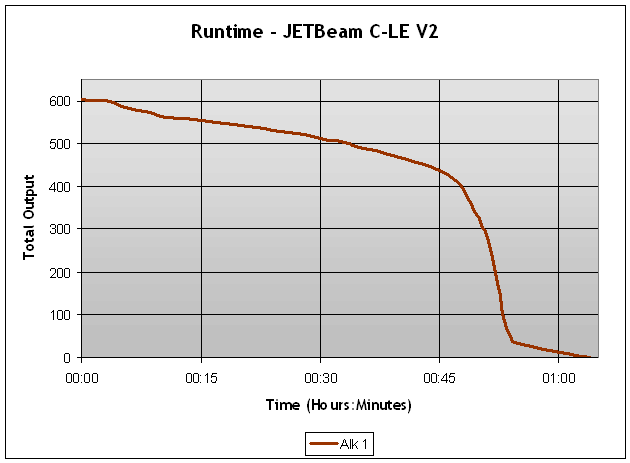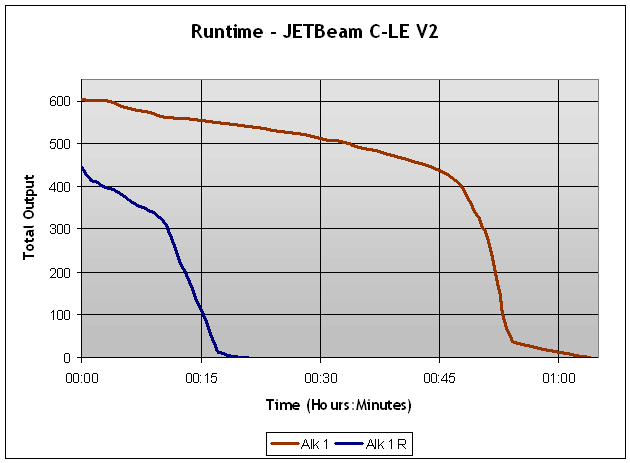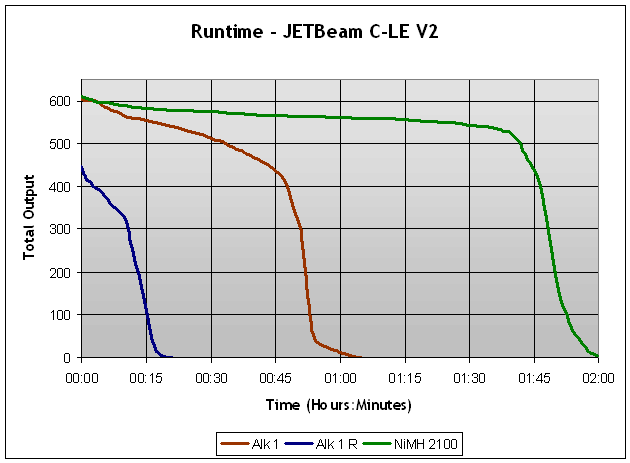@viren - you're right. if your numbers are correct, heat build up should not be of concern even after longer periods. however, comparing the c-le to a Fenix light which experiences the same kind of current draw, it get's pretty obvious, that the heatsinking sucks - Fenixes get warm almost immediately... even at 300mA the head should experience a change in temperature pretty fast, which it does not on any of my samples. anyway, it's cheap, so maybe i should not expect the more thorough design of the more expensive lights. what bothers me most is, that i really like the C-LE - it's one of my EDC lights since 2 months now and i'm really happy with it's performance... since it's smaller than the Fenix lights, it will fit into the coin pocket of a jeans together with a SAK and you don't notice it's there until you need it. i even prefer the twisty over a clicky switch because it's more reliable IMHO.
oh, and just for the record - thermal tape (phase change COMPOUND isn't a tape, but you surely know that) is less effective than thermal grease.
chris
I've done thermal designs for a living. My most recent being a fifty-watt erbium doped fiber amplifier in a 1U pizza-box chassis with no fans (proud of that one, 2 other thermal design engineers said it was impossible). Trust me heatsinking an LED emitter is nothing compared to the pump lasers used in an EDFA. I had to come up with a heatsink that would keep the baseplate temperature of the lasers at less than 65C in a 45C ambient environment with convection cooling only (no fans) in only a 1.75 inch rack mount with very limited air flow. By contrast, most power LED's are quite happy at 100C and can survive 150C temperatures for short periods.
Both thermal pads and tape are indeed available that employ phase change materials, we use pre-cut pads of this type in super high power FPGA applications and it works MUCH better than simple heatsink grease.
Earlier tapes were simply impregnated with zinc oxide or some other low tech heat transfer material, but modern tapes and pads employ phase change materials which are much more effective.
That's why NO CPU I have purchased in the last 5 years used grease (all came with pads, with instructions specifically warning against replacing the pad with grease).
They have this warning because, though it's true that silver and diamond based thermal compounds can perform very well, most self appointed 'overclocking' idiots don't know how to properly apply them so that the layer is
thin enough to outperform the simple tape that the CPU comes with.
Just to show you that my heart is in the right place, here's a nice link for a PDF document from AMD explaining why they recommend thermal pads (based on phase change materials), so you can educate yourself on this subject.
http://www.amd.com/us-en/assets/content_type/white_papers_and_tech_docs/26951.pdf
The comments to the effect that LED eimtters should not heat up much at 1w because of their efficiency is also way off target. The best Luminous efficiency out there now is only a little above 100 lumens/watt compared to theoretical values for a perfect device of about 683 lumens / watt. This means that the vast majority of the power we are pumping into the LED emitters in both the L1D and C-LE is turning to heat.
Looking at the C-LE thermal design, I don't really see any problems.
In the C-LE, the reflector screws into the bezel head to hold the front lens against the o-ring, then the bezel head (with this reflector in place), is screwed down against the emitter star to hold the emitter star flat against the metal mounting surface inside the head. I believe that the surfaces are smooth enough to do the job without thermal compound with reasonable pressure, but if it will make you feel better any better, I saw a more recent post (from a later version v1.2 disassemble) that mentioned some heat sink grease was used.
If the thermal resistance of the contact surfaces is kept reasonable, this is actually a very GOOD thermal design because the emitter star mount can couple heat from both the rear and front surfaces into the flashlight body.
I just did a quick temperature scan on my C-LE running in HIGH power mode (running on 1.2 volt NiMH) with my IR thermometer, and I am only seeing about a 10 or 11 degree Fahrenheit rise, with full thermal equilibrium reached in less than 15 minutes (with most of the rise in the first 5 minutes). These are reasonable times given the small temperature delta.
The L1D does seem to get about 1 or 2 degrees warmer at the equilibrium point, and this is a little surprising because, as has been mentioned, the power drain is about the same, so the total heat sould be similar. The Jetbeam is actually a little smaller, so I can only assume that the thermal emissivity of the C-LE's dull black HAIII surface and it's knurling are helping to shed heat better than the Fenix's smooth shiny black surface.
This would also explain why the Fenix heats up faster, it's not that the Jetbeam is magically keeping all that heat inside, it's that it's getting to the surface and being disapated into the air better, which slows the temperature rise.
So the bottom line is that the C-LE just doesn't heat up very much at all.
Heatsinking is more critical in lights running on non-approved rechargable lithium batteries, and I would agree that heat is more of an issue if these cells are used, but they can not be used in the C-LE, and given the modest heat rise in normal operation with standard Alkaline and NiMH batteries, I don't think there will be any problems.
The old v1.0 C-LE ran a bit hotter, but that's the thing I like about Jetbeam. When folks found issues in the v1.0 C-LE, like the efficiency being mediocre and the PWM frequency being too low, Jetbeam fixed those issues almost immediately in the v1.2 (even though both issues were not easy fixes).
Contrast this to Fenix; people have been bitching that the PWM frequency of the L0D-CE is too low pretty much FOREVER. You wave your Fenix L0D around on low or medium power mode, and things start to take on a surreal stroboscope appearance that some find quite annoying; and Fenix fixed it when? . . . oh, wait, that's right, Fenix NEVER fixed it.
The Jetbeam C-LE also uses a nice MOP reflector (something Fenix is just now getting around to offering on
some models).





